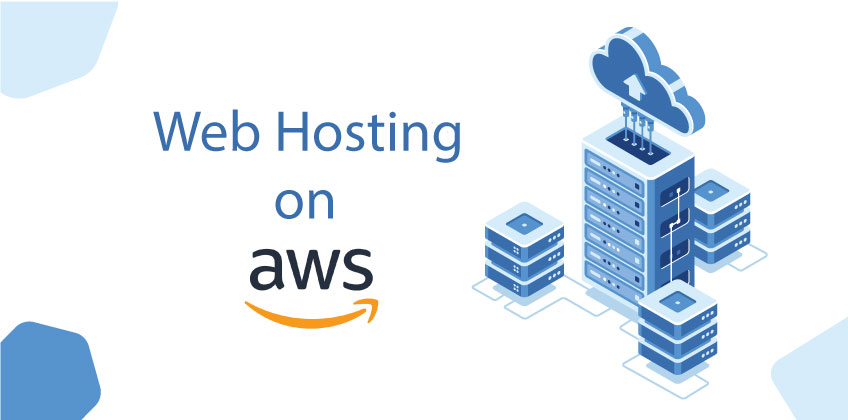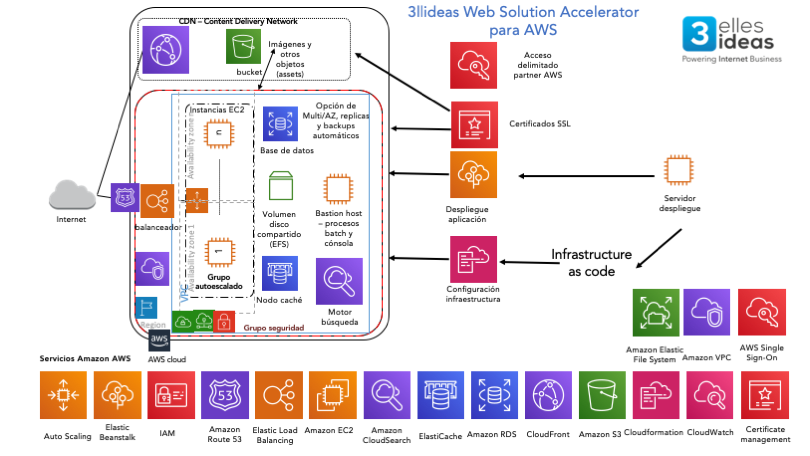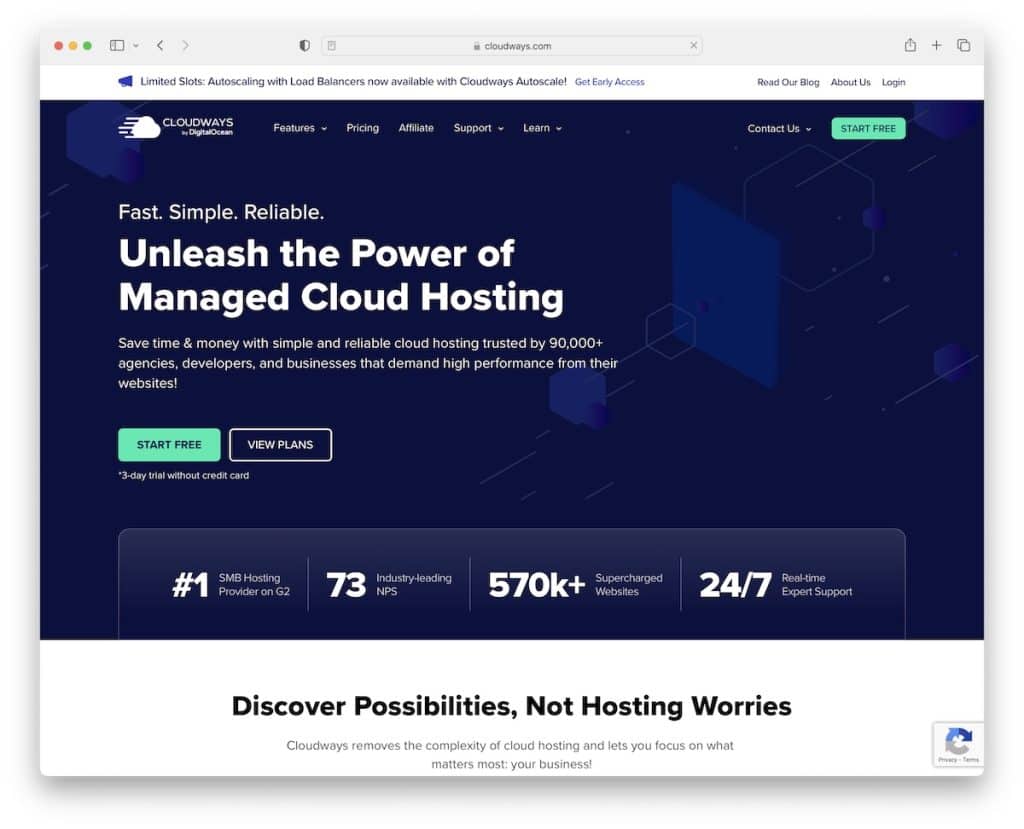AWS Web Hosting stands as a powerful platform for hosting websites and applications in the cloud. It offers a vast array of services, each designed to meet specific needs, from simple static websites to complex, dynamic applications. Unlike traditional web hosting, AWS provides unparalleled scalability, flexibility, and security, empowering businesses to grow and adapt seamlessly.
This comprehensive guide delves into the core concepts of AWS web hosting, exploring its advantages, services, and best practices. We’ll examine how to set up and manage your website, optimize costs, and leverage the platform’s robust security features. Whether you’re a seasoned developer or just starting your web hosting journey, this guide will equip you with the knowledge to harness the full potential of AWS.
Benefits of AWS Web Hosting

AWS web hosting offers a comprehensive suite of services designed to meet the diverse needs of businesses of all sizes. From startups to large enterprises, AWS provides a reliable, scalable, and cost-effective platform for hosting websites and applications.
Key Advantages of AWS Web Hosting
AWS offers a range of advantages that make it a compelling choice for web hosting. These benefits contribute to improved performance, enhanced security, and greater flexibility for businesses.
- Global Reach and High Availability: AWS has a vast global network of data centers, ensuring low latency and high availability for websites and applications. This global presence allows businesses to reach a wider audience and minimize downtime. For example, a company with customers in Europe and Asia can benefit from AWS’s data centers in those regions, ensuring fast loading times for users regardless of their location.
- Scalability and Flexibility: AWS provides on-demand resources, allowing businesses to scale their infrastructure up or down as needed. This eliminates the need for upfront investments in hardware and software, making it ideal for businesses experiencing fluctuating traffic or seasonal demand. For instance, an e-commerce website can easily scale its resources during peak shopping seasons like Black Friday and Cyber Monday, ensuring a smooth customer experience.
- Cost Optimization: AWS offers a pay-as-you-go pricing model, where businesses only pay for the resources they use. This can significantly reduce hosting costs compared to traditional on-premises solutions. By utilizing AWS’s services like EC2 (Elastic Compute Cloud) and S3 (Simple Storage Service), businesses can optimize their infrastructure spending and allocate resources effectively.
- Enhanced Security: AWS provides robust security features, including firewalls, intrusion detection systems, and data encryption. These measures protect websites and applications from cyber threats and ensure data privacy. AWS’s security best practices and compliance certifications (e.g., ISO 27001, SOC 2) give businesses peace of mind knowing their data is secure.
Real-World Examples of AWS Web Hosting Success
Many businesses have successfully leveraged AWS web hosting to achieve significant growth and efficiency.
- Netflix: The streaming giant uses AWS to deliver its content to millions of users worldwide. AWS’s global reach and scalability enable Netflix to handle peak traffic during popular show releases, ensuring a smooth viewing experience for its subscribers.
- Airbnb: The online marketplace for lodging relies on AWS to power its platform and manage its rapidly growing user base. AWS’s scalability and flexibility allow Airbnb to adapt to fluctuating demand and provide a seamless booking experience for travelers.
- Pinterest: The social media platform for visual discovery utilizes AWS to manage its vast image library and handle the high volume of user interactions. AWS’s storage and compute resources enable Pinterest to provide a fast and reliable platform for its users.
AWS Web Hosting Services
Amazon Web Services (AWS) offers a wide range of services for web hosting, catering to diverse needs and requirements. These services are designed to provide scalability, reliability, and cost-effectiveness for various web applications.
AWS Web Hosting Services
AWS provides a comprehensive suite of services for web hosting, each designed to meet specific needs. Here’s a comparison of some of the most popular AWS services:
| Service Name | Description | Key Features | Use Cases |
|---|---|---|---|
| Amazon EC2 | Virtual servers that provide on-demand computing capacity. |
|
|
| Amazon Elastic Beanstalk | A platform-as-a-service (PaaS) that simplifies web application deployment and management. |
|
|
| Amazon S3 | Object storage service for storing and retrieving data. |
|
|
| Amazon CloudFront | Content delivery network (CDN) that delivers content to users globally. |
|
|
Amazon EC2
Amazon EC2 (Elastic Compute Cloud) is a fundamental AWS service that provides virtual servers, known as instances. These instances offer on-demand computing capacity, allowing you to scale your web applications as needed. EC2 provides a wide range of instance types, each optimized for different workloads, such as general-purpose, compute-optimized, and memory-optimized.
Key Features:
* Flexible Instance Types: EC2 offers a wide variety of instance types, each tailored to specific needs, such as CPU, memory, and storage requirements. This flexibility allows you to choose the right instance type for your application, ensuring optimal performance and cost-effectiveness.
* Scalable Compute Resources: EC2 allows you to easily scale your computing resources up or down as your application demands change. This scalability ensures that your web application can handle traffic spikes and maintain performance even during peak hours.
* Choice of Operating Systems: You can choose from a variety of operating systems, including Linux, Windows, and other specialized operating systems, depending on your application’s requirements. This flexibility ensures compatibility and ease of deployment.
Pricing Model:
EC2 pricing is based on the instance type, operating system, and usage time. You pay for the time your instances are running, and the cost varies depending on the instance type and region. AWS offers various pricing models, including On-Demand, Reserved Instances, and Spot Instances, providing flexibility and cost optimization options.
Amazon Elastic Beanstalk
Amazon Elastic Beanstalk is a platform-as-a-service (PaaS) that simplifies the deployment and management of web applications. It automates many of the tasks involved in web hosting, such as provisioning infrastructure, load balancing, and scaling. Elastic Beanstalk supports various programming languages and frameworks, including Java, .NET, Python, PHP, Node.js, and Ruby.
Key Features:
* Automated Deployment and Scaling: Elastic Beanstalk automates the deployment process, allowing you to easily deploy and manage your web applications. It also provides automatic scaling, ensuring that your application can handle varying traffic loads.
* Support for Various Programming Languages and Frameworks: Elastic Beanstalk supports a wide range of programming languages and frameworks, making it easy to deploy applications built with your preferred technologies. This flexibility allows you to leverage existing code and skills.
* Integrated Monitoring and Logging: Elastic Beanstalk provides built-in monitoring and logging capabilities, allowing you to track your application’s performance and troubleshoot issues easily. This integration streamlines application management and provides valuable insights.
Pricing Model:
Elastic Beanstalk pricing is based on the underlying EC2 instances used to run your application. You pay for the EC2 instances used and any additional services, such as load balancing and storage. AWS offers various pricing models, including On-Demand, Reserved Instances, and Spot Instances, providing flexibility and cost optimization options.
Amazon S3
Amazon S3 (Simple Storage Service) is a highly scalable and durable object storage service that provides a cost-effective way to store and retrieve data. S3 is designed for a wide range of use cases, including web hosting, data backups, and archiving.
Key Features:
* High Availability and Durability: S3 is designed to be highly available and durable, ensuring that your data is accessible and protected. S3 uses a distributed system with multiple replicas of your data across different data centers, ensuring data redundancy and resilience.
* Scalable Storage Capacity: S3 offers virtually unlimited storage capacity, allowing you to store massive amounts of data. You can easily scale your storage needs as your data requirements grow.
* Low-Cost Storage Options: S3 provides various storage classes, each optimized for different use cases and cost requirements. You can choose the storage class that best suits your needs, ensuring cost-effectiveness and data accessibility.
Pricing Model:
S3 pricing is based on storage capacity, data transfer, and retrieval requests. You pay for the amount of data stored, the amount of data transferred, and the number of requests made to retrieve data. AWS offers various storage classes, each with different pricing models, providing flexibility and cost optimization options.
Amazon CloudFront
Amazon CloudFront is a content delivery network (CDN) that delivers content to users globally with low latency and high performance. CloudFront uses a network of edge locations distributed around the world, caching content closer to users and reducing the time it takes to load content.
Key Features:
* Global Network of Edge Locations: CloudFront has a global network of edge locations, ensuring that content is delivered to users from the nearest location. This proximity reduces latency and improves content delivery speeds.
* Fast Content Delivery and Low Latency: CloudFront optimizes content delivery, ensuring that users experience fast loading times and low latency. This improves user experience and engagement.
* Secure Content Delivery with SSL/TLS Encryption: CloudFront supports secure content delivery using SSL/TLS encryption, ensuring that data is transmitted securely between your servers and users. This protects sensitive information and enhances security.
Pricing Model:
CloudFront pricing is based on data transfer, requests, and the use of additional features. You pay for the amount of data transferred, the number of requests made to retrieve content, and any additional features used, such as custom origins and origin access control. AWS offers various pricing models, providing flexibility and cost optimization options.
Setting Up AWS Web Hosting

Setting up your website on AWS is a straightforward process, but it requires some planning and understanding of the different services available. This section will guide you through the steps of setting up a basic website, deploying it using AWS services, and configuring security measures for your AWS-hosted website.
Creating an AWS Account
Before you can start setting up your website, you need to create an AWS account. This is a simple process that involves providing your basic information and verifying your identity.
- Go to the AWS website and click on the “Create an AWS Account” button.
- Fill out the registration form with your personal and billing information.
- Verify your email address and phone number.
- Select a payment method and agree to the AWS terms and conditions.
Choosing an AWS Service for Web Hosting
AWS offers various services for web hosting, each with its own strengths and weaknesses. The most popular choices for basic websites are:
- Amazon S3: A simple and cost-effective storage service that can be used to host static websites.
- Amazon EC2: A virtual machine service that provides more flexibility and control over your server environment. This is a good option for dynamic websites or those requiring specific software configurations.
- Amazon Lightsail: A simplified service for beginners that provides a pre-configured virtual machine and web server with easy-to-use tools for website deployment.
Setting Up a Basic Website on AWS, Aws web hosting
This section will focus on using Amazon S3 to host a static website.
- Create an S3 Bucket: Navigate to the S3 service in the AWS console and click on “Create bucket.” Choose a unique name for your bucket and select a region that is closest to your target audience.
- Upload Website Files: Upload your website files (HTML, CSS, JavaScript, images) to the S3 bucket. You can do this using the S3 console, the AWS CLI, or a third-party tool.
- Configure Website Settings: In the S3 bucket settings, enable static website hosting and specify the index document (e.g., index.html) and error document (e.g., 404.html).
- Get Website URL: Once your website is set up, you can access it using the provided S3 bucket URL. You can also create a custom domain name and point it to your S3 bucket.
Deploying a Website Using AWS Services
For more complex websites or applications, you might want to use a combination of AWS services for deployment. This workflow Artikels a common approach:
- Code Repository: Store your website code in a version control system like GitHub or GitLab.
- Continuous Integration/Continuous Delivery (CI/CD): Set up a CI/CD pipeline using AWS CodePipeline to automatically build, test, and deploy your code to AWS. This can be triggered by code changes in your repository.
- Compute Service: Choose an appropriate compute service like EC2 or Elastic Beanstalk to run your website application.
- Load Balancer: Use AWS Elastic Load Balancing to distribute traffic across multiple instances of your website application for high availability and scalability.
- Database: If your website requires a database, use AWS RDS to host your database securely and efficiently.
Configuring Security Measures for an AWS-Hosted Website
Security is paramount for any website, and AWS provides various tools to protect your website from threats.
- Firewall: Use AWS Security Groups to control network traffic to and from your website instances. You can create rules to allow only authorized traffic and block malicious traffic.
- Web Application Firewall (WAF): AWS WAF helps protect your website from common web attacks like SQL injection and cross-site scripting. It allows you to create rules to block specific types of traffic based on your website’s security requirements.
- IAM Roles: Use AWS Identity and Access Management (IAM) to control access to your AWS resources. You can create IAM roles with specific permissions for your website application and restrict access to sensitive information.
- Encryption: Encrypt data at rest and in transit using AWS services like Amazon S3 encryption and AWS Key Management Service (KMS).
Last Point

AWS Web Hosting has revolutionized the way websites and applications are built and deployed. By embracing the power of the cloud, businesses can unlock new levels of efficiency, scalability, and security. This guide has provided a comprehensive overview of the platform, its services, and its potential benefits. As you explore the vast capabilities of AWS, remember to leverage its flexibility and cost-optimization tools to create a robust and scalable web hosting solution tailored to your unique needs.


